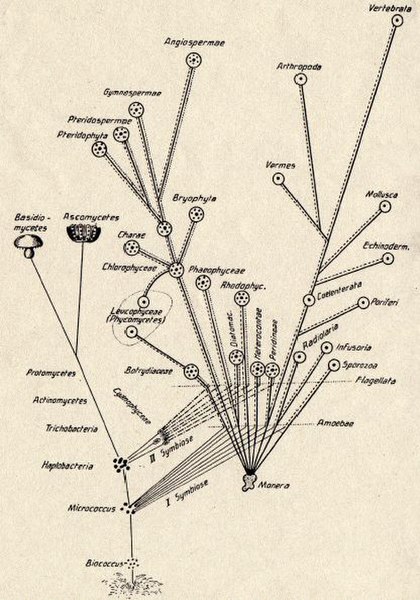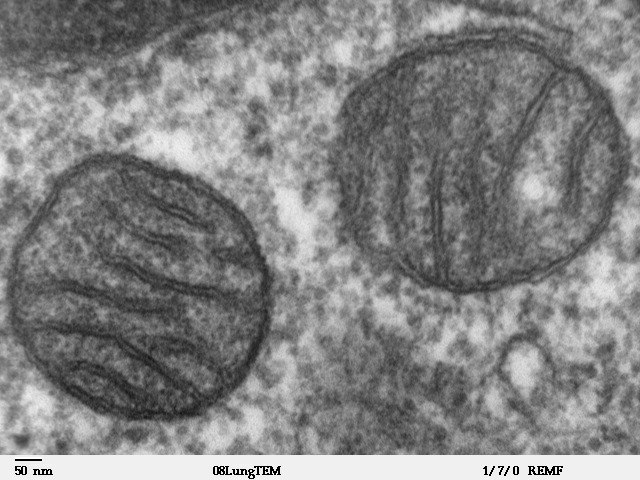Konstantin Sergeevich Mereschkowski was a Russian biologist and botanist, active mainly around Kazan, whose research on lichens led him to propose the theory of symbiogenesis – that larger, more complex cells evolved from the symbiotic relationship between less complex ones. He presented this theory in 1910, in his work, The Theory of Two Plasms as the Basis of Symbiogenesis, a New Study of the Origins of Organisms, although the fundamentals of the idea had already appeared in his earlier 1905 work, The nature and origins of chromatophores in the plant kingdom.
Mereschkowski c. 1885
Suicide scene of Konstantin Mereschkowski
Mereschkowski's tree-of-life diagram, showing the origin of complex life-forms by two episodes of symbiogenesis, the incorporation of symbiotic bacteria, 1905
Symbiogenesis is the leading evolutionary theory of the origin of eukaryotic cells from prokaryotic organisms. The theory holds that mitochondria, plastids such as chloroplasts, and possibly other organelles of eukaryotic cells are descended from formerly free-living prokaryotes taken one inside the other in endosymbiosis. Mitochondria appear to be phylogenetically related to Rickettsiales bacteria, while chloroplasts are thought to be related to cyanobacteria.
Konstantin Mereschkowski's 1905 tree-of-life diagram, showing the origin of complex life-forms by two episodes of symbiogenesis, the incorporation of symbiotic bacteria to form successively nuclei and chloroplasts
Internal symbiont: mitochondrion has a matrix and membranes, like a free-living alphaproteobacterial cell, from which it may derive.




